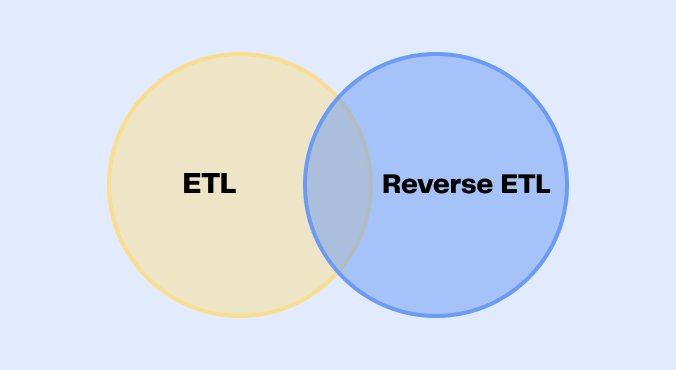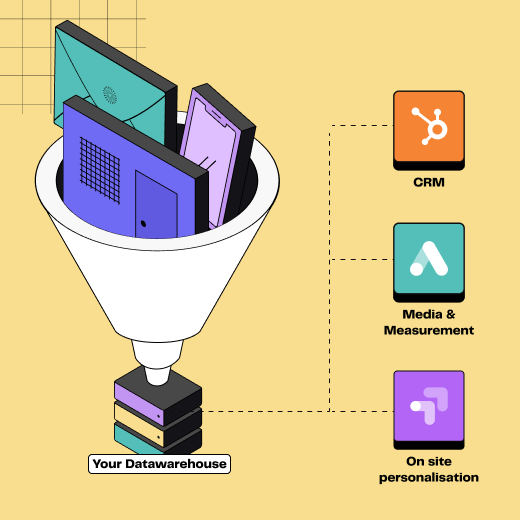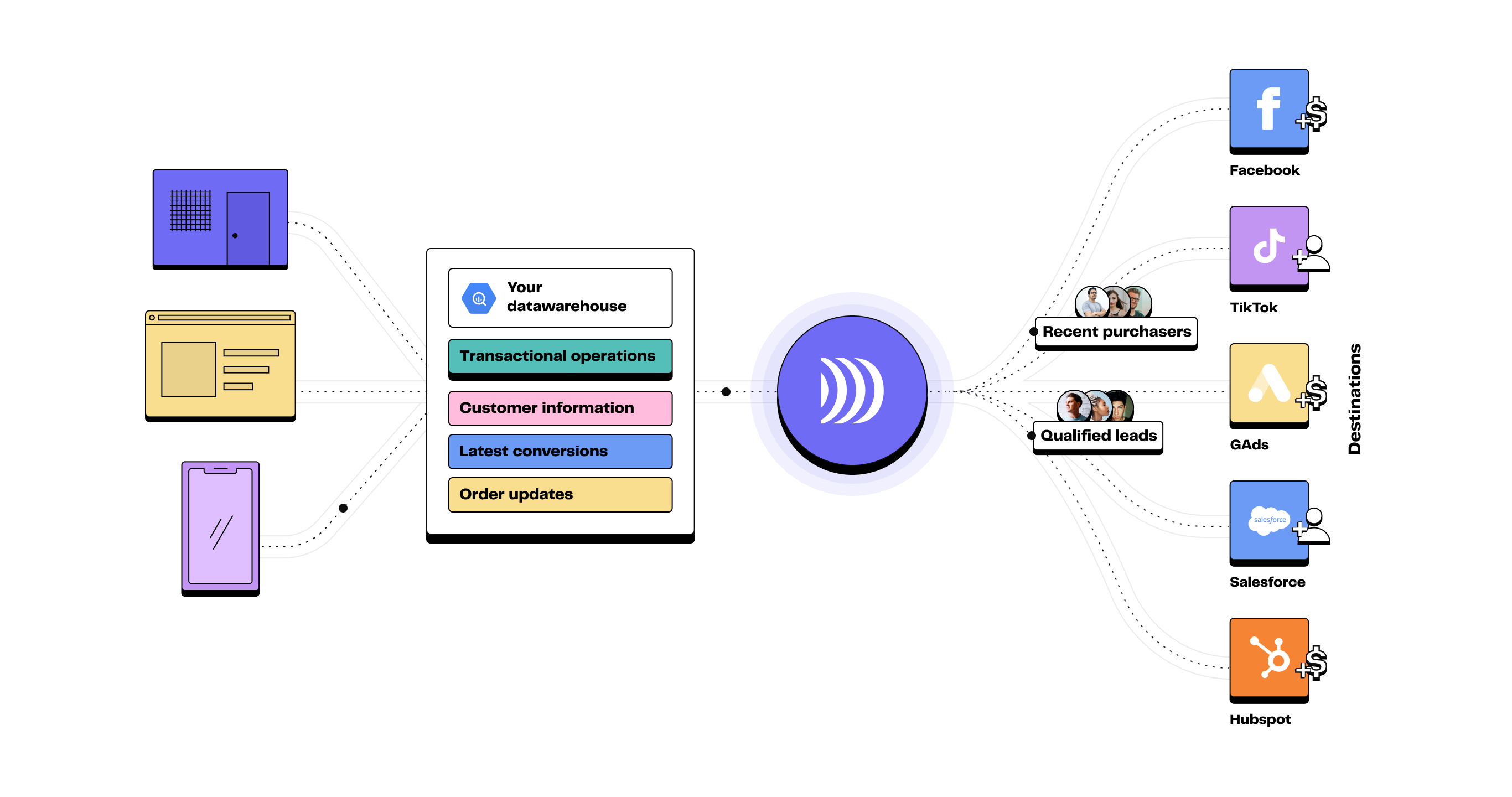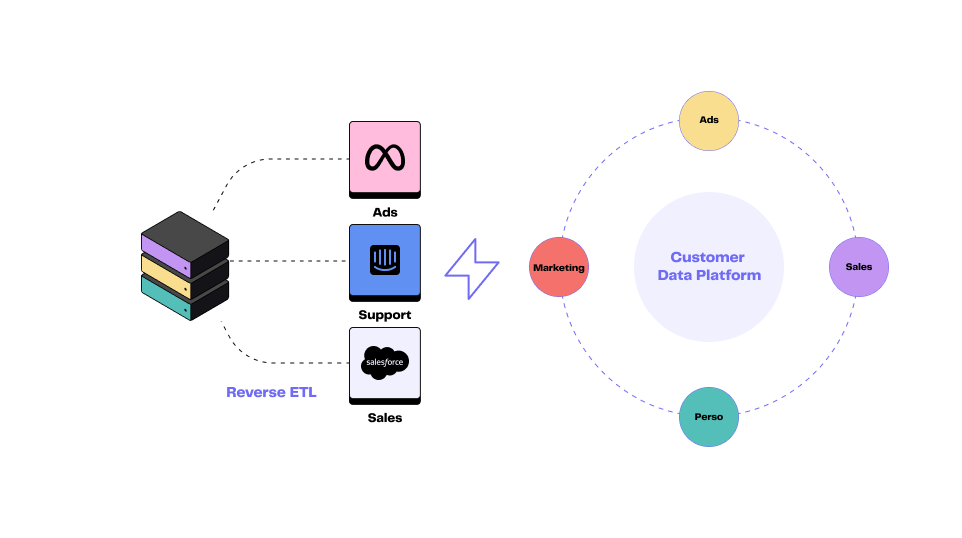ETL and Reverse ETL are two distinct approaches to managing data flows within an organization. Understanding their differences is crucial for choosing the method that best suits your data management needs.
Don't worry, it's normal to need both tools to cover all your use cases - we just want to highlight which one to choose for a specific need.
Definitions of ETL and Reverse ETL
What is ETL?
ETL (Extract, Transform, Load) is a data management process that consists of three main steps:
Extract: Retrieving data from various sources (databases, files, APIs, etc.).
Transform: Cleaning, modifying, verifying, and sorting data to fit a target format or structure, often for analysis or reporting. The goal is to standardize the data and make it usable by anyone in the company, especially for dashboarding.
Load: Inserting the transformed data into a final storage system, such as a data warehouse or target database.
ETL is crucial for data integration and decision-making based on consolidated and prepared information.
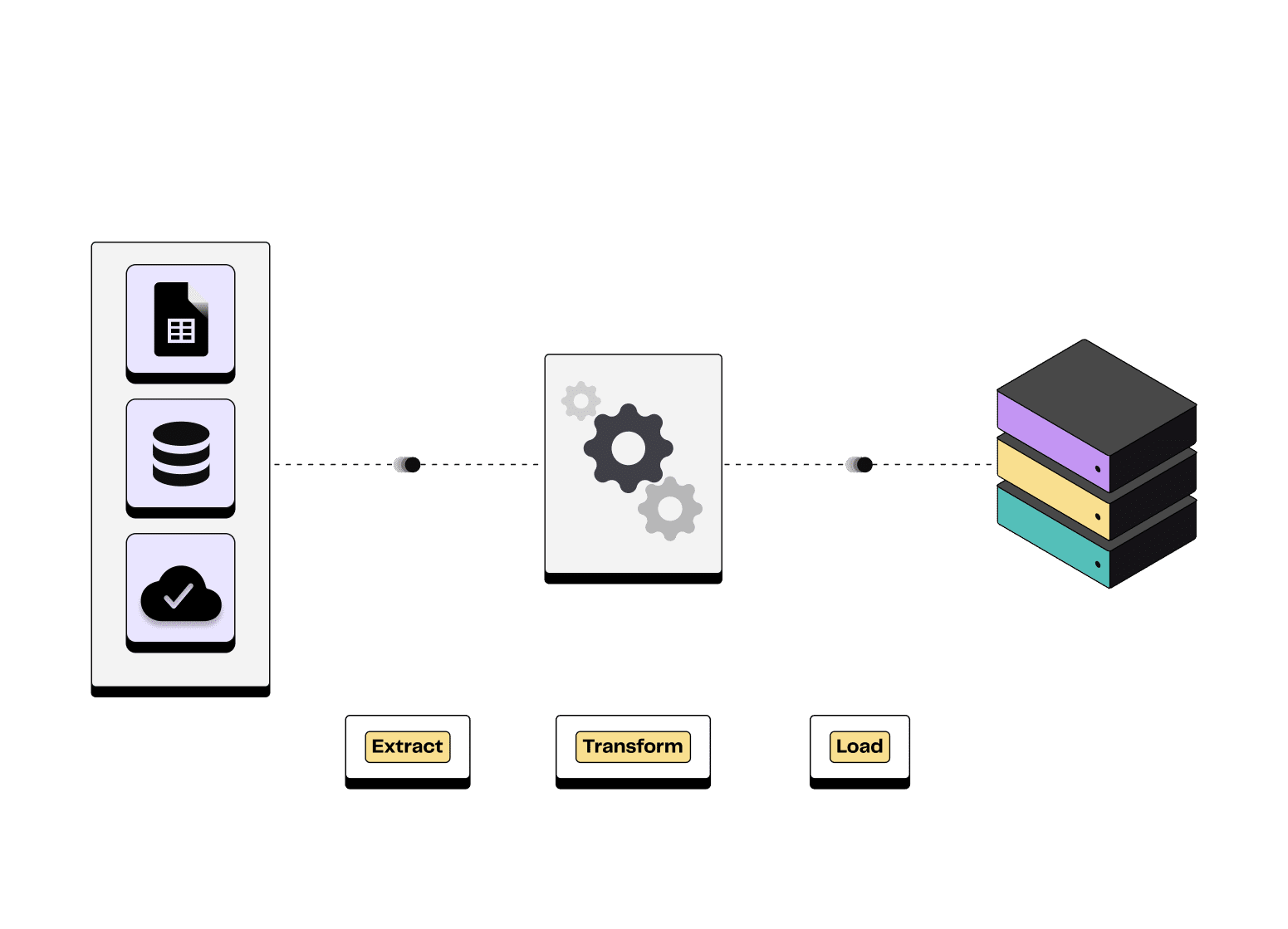
Extract Transform Load process illustration
Today, data is increasingly extracted, then loaded into a cloud data warehouse and transformed. This process is called ELT (Extract, Load, Transform). The ELT process is often considered to be a preferred approach to data management, as it allows all raw data to be held in the data warehouse until it is used.
What is Reverse ETL?
Reverse ETL is the inverse process of ETL. It involves extracting data from a centralized source (often a data warehouse), transforming it to fit operational systems needs, and loading it into business applications.
Reverse ETL focuses on distributing analytical data to operational systems to improve business processes, sometimes even in real time.
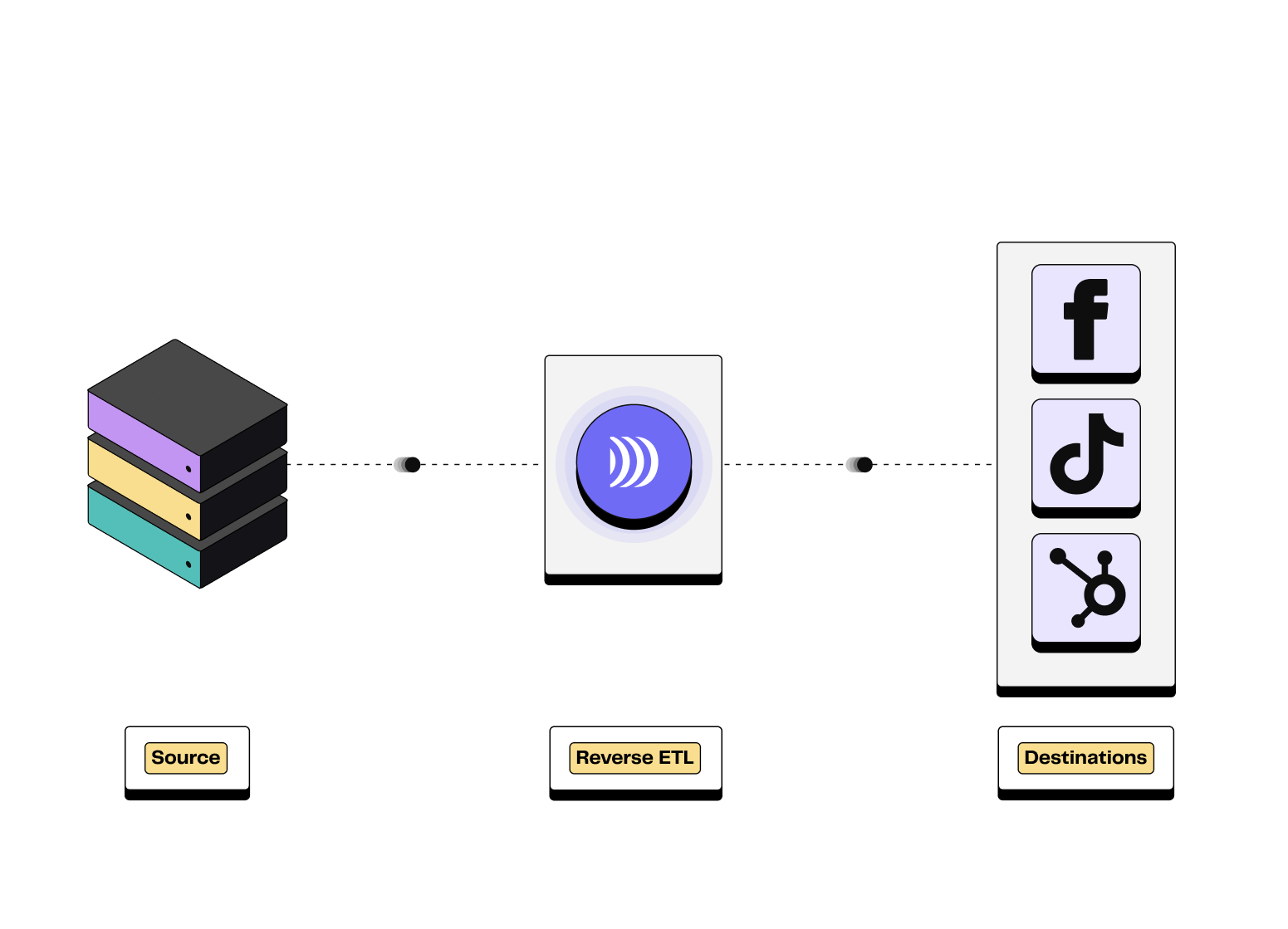
With Reverse ETL, the data is extracted, transformed and loaded in business tools.
In the rest of this article, we will look into the functional differences between ETL and Reverse ETL.
Data Flows
The main difference between ETL and Reverse ETL lies in the direction of data flow.
ETL extracts data from source systems (like transactional databases, CSV files, etc.), transforms it according to analysis needs, and loads it into a data warehouse.
Reverse ETL, on the other hand, transfers data from a data warehouse to business tools such as CRMs, marketing systems, and analytics platforms.
This distinction is fundamental as it determines the starting point and destination of data within your technological infrastructure.
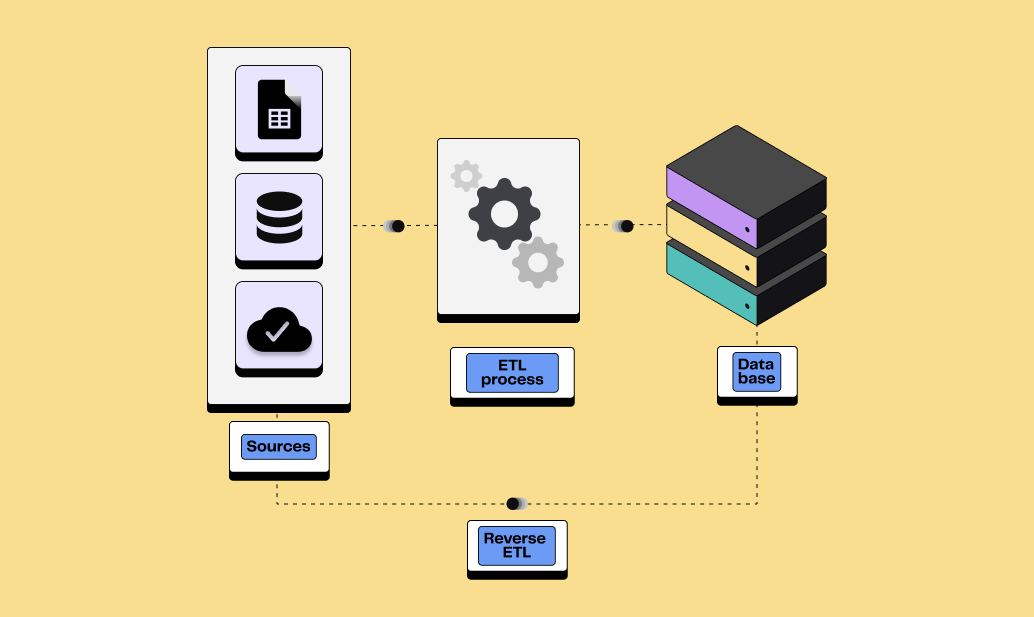
Objectives and Usage
Traditional ETL focuses on consolidating and analyzing data, providing a unified and historical view of company activities to support strategic decisions.
Reverse ETL aims to make centralized data available to operational teams, enabling a more effective and direct use in daily business operations.
These differing objectives directly influence how data is processed and used within the organization.
Transformation Complexity
The level of complexity of data transformations varies between ETL and Reverse ETL.
Traditional ETL often involves complex transformations to standardize, deduplicate, clean, and structure data from disparate sources before loading it into the data warehouse. These operations transform large volumes of raw and unusable data into actionable data, especially for reporting.
Reverse ETL, however, generally applies simple and direct transformations, tailored to the specific operational needs of business tools. The main goal is to have data immediately usable by business teams (segmented, in the appropriate format, ensuring a high matching rate in their tools, etc.), without needing to bother data teams.
This difference affects the time and resources needed for each type of process.
Latency
Latency, or the delay between data extraction and its availability to the end-user, is another key aspect that distinguishes Reverse ETL from traditional ETL.
Traditional ETL can involve higher latency due to the complexity of transformations and the volume of data processed.
Reverse ETL tends to offer low latency, nearly real-time, allowing users to quickly access updated data for immediate actions in their tools.
Target Audience
Finally, the end-users of Reverse ETL and traditional ETL typically differ within the organization.
Traditional ETL is intended for analysts or data scientists, who use consolidated data for in-depth analyses and strategic reports.
Reverse ETL is primarily aimed at operational teams, such as marketing, sales, and customer support, who need real-time data for their daily activities. However, not all Reverse ETL solutions are usable by business teams as no-code features are not always available.
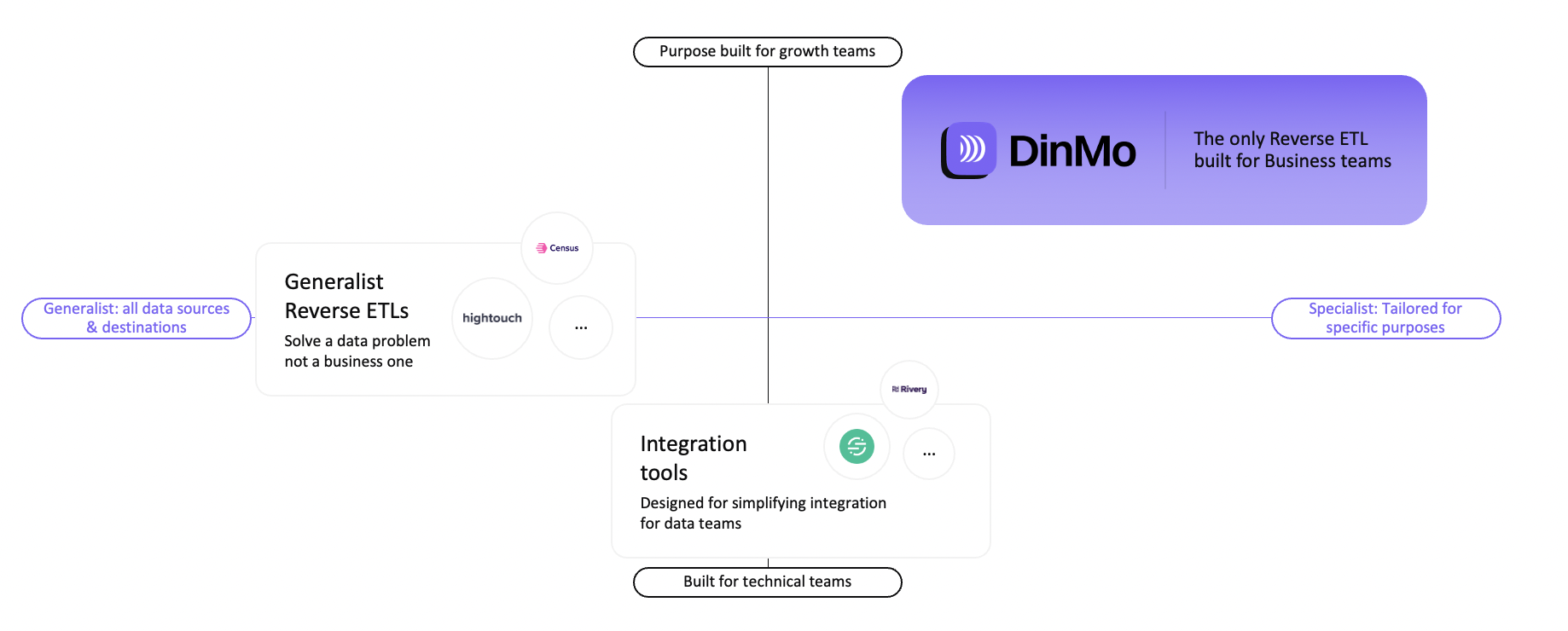
Reverse ETL categories
To improve your data management and meet your organization's specific needs, consider complementing your tech stack with both ETL and Reverse ETL tools!
💡 If you are ready to optimize data analysis and activation, start exploring ETL and Reverse ETL tools and best practices now. For this, feel free to contact us.

















